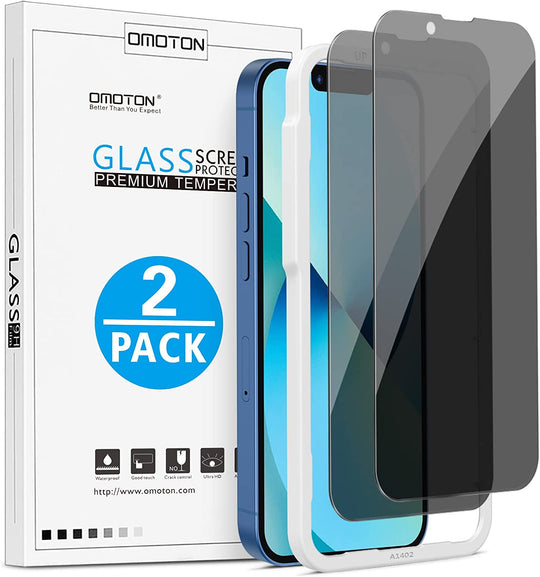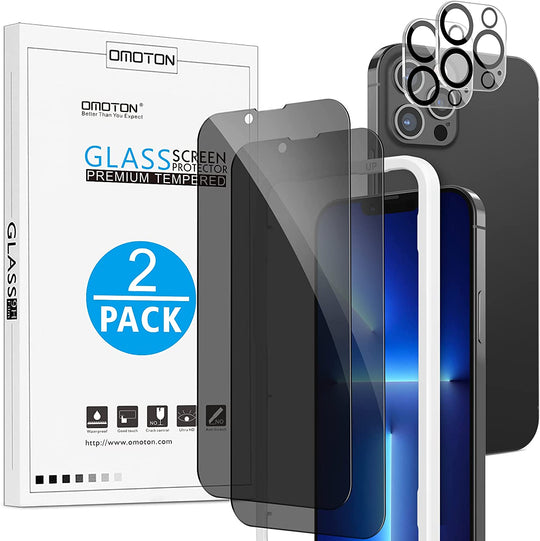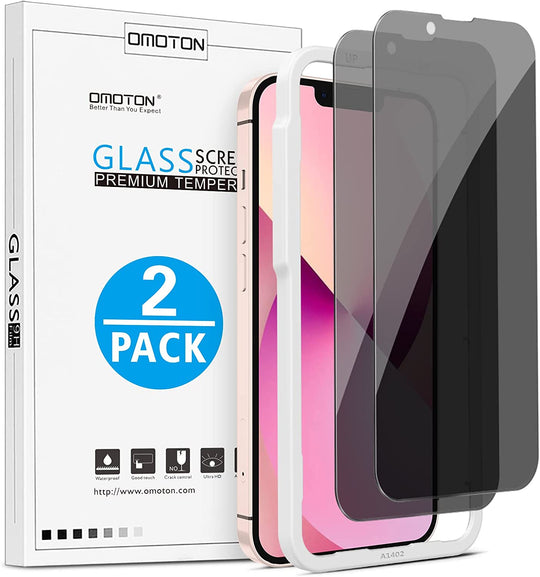After purchasing a new smartphone, the first thing we usually do is buy a case. After all, leaving the house without one is like leaving the house without shoes on: dangerous! But what about a screen protector? Choose the right one, and you have yourself a snug, compact, and positive user experience. So comfortable, you can forget its even there. But choose the wrong one, and you’re in for a world of discomfort in terms of functionality, and even run the risk of seriously harming your phone.
The harms of poor-quality screen protectors are real and judging their quality may be difficult, what you want is something that is durable and will last. Cheap screen protectors will not only damage your screen but will also give you a false sense of security. A quality screen protector will prevent cracks and allow you to continue using your smartphone without needing to buy a new one right away.
With these factors in mind, it’s safe to say that although most phone screen protectors may look the same, they are not, in fact, created equal. But rest assured: Once you know what to look for, finding the right fit is actually quite easy, and certainly cheaper than shopping around for a new phone or completely replacing a cracked screen. So let’s dive into what to look for in a phone screen protector, and what to avoid.
How long can a screen protector last
With proper care and maintenance, a screen protector can last indefinitely. In fact, a quality screen protector may even outlast the internal components of your smart phone, including the battery. But it really all depends on what material your screen protector is made from.
Currently, there are two main types of phone screen protectors on the market: plastic and tempered glass, but choosing between the two isn’t a Catch-22. As a general rule, you should always go with the tempered glass. So let’s break it down, before you break your phone.
Tempered Glass vs Plastic
1) Durability
Plastic is flexible, reusable, and won’t crack like some glass. Additionally, it’s normally cheaper, which is why some people may be drawn to it in the first place. Oftentimes, you can get two, sometimes even three, plastic covers for the price of one tempered glass screen protector.
But don’t be fooled! “Reusability” and “flexibility” doesn’t necessarily mean “quality.” After all, if your phone screen cracks but your plastic screen protector remains intact, what’s the point? What good is having one or two extra plastic covers if you can’t even use your phone? Quality over quantity is the name of the game here.
Tempered glass, also known as “Safety Glass,” is an extremely durable material and the industry standard for car windows, glass tables, shower doors, or any other glass installations where increased safety standards for protecting people and their property are a priority. And since we use our smartphones every day, why wouldn’t you want to apply that same layer of safety directly onto your phone (literally)? Through a scientific process of rapidly heating and cooling glass and then applying it as layers one on top of the other using a penetrable, silicone coating, highly compressed tempered glass ends up becoming much more heat and scratch resistant, and up to 5 times stronger than regular glass. Thus, infinitely more effective at protecting your phone against damage than a flimsy plastic film cover. If it’s strong enough for a car window, it’s strong enough for your phone. Plus, it won’t shatter completely if it does break, but more on this later.

2) Cleanliness
Likewise, glass can be easily wiped and cleaned, whereas plastic cannot. Even if you’re not a particularly accident-prone or clumsy individual and not worried about cracking your screen, nobody wants to use a dirty device. Which is precisely what will happen if you use a plastic screen protector, guaranteed.
Due to the nature of the material, over time, gunk and oil from your fingertips will accumulate and adhere to a sticky plastic screen cover, causing it to eventually become hazy and lose clarity. And sure, you could just replace a plastic screen cover when that happens, but oftentimes, that does more harm than good.
Every time you replace your screen cover you run the risk of air bubbles, dirt, and grime accumulating beneath the surface, which can further affect the visibility of your device’s screen. Not to mention it’s annoying, both to look at and maintain. Nobody wants to perform “screen protector surgery” every couple of months.
With a tempered glass screen, you have a “one-and-done” type of situation. Do it right the first time, and you don’t have to worry about it again. Just give it a wipe, and you’re good to go. You don’t have to be a neat freak to understand the value in that. Plus, even if you do want to give it a clean, lifting a tempered glass screen protector to remove dust is much easier, and you can easily snap it back into place when you’re done.
Likewise, unlike tempered glass, plastic is not fingerprint-resistant. This means that even the smallest of smudges tend to become more pronounced with a plastic screen protector. Furthermore, any tiny cracks, scratches, or imperfections tend to grow larger over time- turning small problems into big problems, and making them impossible to ignore. This will ultimately affect your user functionality. Which brings us to the last point.
3) Functionality
Not only is plastic not fingerprint-resistant, it just doesn’t feel as good. It tends to run a little sticky in humid weather, which is not only gross, but also impractical. In this regard, tracking your fingers along a device’s surface, navigating over a touch screen, and general clicking can become arduous affairs that only worsen over time. Conversely, since most electronic device screens are made from glass, not plastic, using a tempered glass screen protector is a much more natural affair that not only provides a far sleeker appearance, but also user experience. A quality tempered glass screen protector will give you the original feeling that the manufacturer intended, if not better. Unlike plastic, gliding across glass is both amusing and a pleasure. Think of the difference between roller skating on a cracked concrete road as opposed to ice-skating across a freshly polished winter pond.
And finally, plastic screen protectors often fail to give full coverage of your device’s screen surface, especially if it has curved edges. This actually ends up making them less scratch-resistant, and ultimately more vulnerable to damage if dropped.
Fortunately, OMOTON has you covered. With a wide variety of quality, durable, and functional tempered glass screen protectors available for your device. You can check out our latest tempered glass screen protectors here https://omoton.com/collections/screen-protector
Can a screen protector damage your screen
The short answer is no, a screen protector will not damage your screen. If they did, companies wouldn’t bother to manufacture them, nor would people continue to buy them.
That being said, there does seem to be some common misconceptions associated with screen protectors and sensitivity issues that are important to discuss, and a lot of misinformation and hearsay about their causes. So let’s clear the air, once and for all: Will my screen protector affect touch sensitivity?

Generally, no, your screen protector won’t affect touch sensitivity at all. Especially not if you use a tempered glass screen protector. They are specifically manufactured to be just as sensitive and responsive to your touch as your device, and as such, are designed to work hand in hand (or finger-to-finger?) with your specific phone, tablet, or computer’s screen.
Additionally, although some people may claim their screen cover affects the sensitivity, this is almost always an issue with the screen protector itself, not the actual device, which is good news. And even then, it’s usually only an issue associated with very low-quality screen protectors or plastic covers.
But low quality or not, rest assured- screen protectors can’t physically harm your device, they may just make it a little more awkward to use. So, if this is something you’re worried about, get yourself a quality, tempered glass screen protector, and definitely don’t use a plastic screen cover.
However, if you feel that you’re still experiencing issues, you can always adjust the pressure sensitivity on your device, which should even out any slight irregularities you may be experiencing.
You can follow this guide below to adjust the pressure sensitivity on your Android or iOS device.
Android
- Go to your “Settings” APP.
- Click on “Advanced Features.”
- Scroll down to “Touch Sensitivity,” and make sure this is turned on. The icon on the right will turn blue when it is activated.

iOS
- Go to your “Settings” APP.
- Click on “General.”
- Click on “Accessibility.”
- Scroll down and click on “3D Touch.”
- Adjust the bar to fit your preference. If 3D touch sensitivity is low, move the icon towards the ‘Light’ end of the bar. This allows less pressure to be exerted on your screen, thus, fixing any small issues you may have.

Will a screen protector help cracked screen
You’re the daredevil type- the kind of person who enjoys taking risks and doesn’t play by the rules. The kind of person who, when the salesclerks asks if you want to spend a little extra on a screen protector, you gladly tell them “No thanks!” and relish in the look of shock that inevitably befalls their face.
“What kind of maniac doesn’t use a screen protector?” Their expression seems to say. You, that’s who!
Then, as you skip out of the store, confident in your graceful, definitely-not-clumsy ways, it happens. You drop your phone, and the screen cracks.
Is it too late to go back? To admit your faults and fix the past? Will a screen protector even help a cracked screen?
The answer, luckily, is yes- a screen protector can help a cracked screen.
If the damage is minimal, say, one or two cracks, a tempered glass screen protector can help cover up the damage. It won’t fix the cracks, but it can’t hurt, either, and will definitely extend the longevity of your device’s usage as well as prevent any further “spidering,” or growing of the cracks, on your screen.
But exactly how long a tempered glass screen protector will extend the life of your device is hard to say. It all depends on the extent of the injury sustained, and how durable your new, tempered glass case is.
Additionally, shards of glass or bits of debris that spring free from your device can pose a potential safety hazard to your fingers when scrolling if you’re not careful, or to your beard and hair if they snag in the cracks while talking on the phone.
So although if the damage is really severe you may not be able to save your device completely, one thing is certain: your protective cover will definitely help to create a barrier that will at least save yourself the trouble of sustaining any accidental bodily injury that may occur when using it.
While it may be true that a screen protector won’t help fix a lifetime of bad and careless mistakes (like using a phone without protection), the good news is it’s never too late to change your ways, and yes, a screen protector can help a cracked screen, in more ways than one. But honestly, it’s best to avoid all these troubles and just get yourself a tempered glass protective case to begin with.

Quality Screen Protectors Are Worth It
Like a new phone, tablet, or computer, buying a protective screen cover is an investment. But one that is hopefully infinitely cheaper (and easier!) than purchasing an entirely new device. When done correctly, it should be something you don’t even notice. Think about it like insurance. Hopefully you’ll never need it, but in case of accidental injury, it’s still best to have it. Therefore, make sure you do it right the first time - get yourself a durable, tempered glass screen protector that will last, and maybe even outlast, your more costly electronic device. Otherwise, you may end up paying for it later!






















